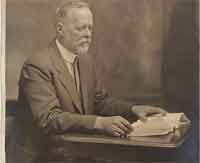Difference Between Active Transport and Passive Transport
Every living being or thing is made up of cells. Bodies of plants and animals, from micro organisms, the smallest bacteria to the largest animal, are all made up of cells. The health of these cells is vital in their growth and development. To feed our cells with the nutrients and other substances that they need, our bodies have developed a transport system. These are classified into two, the active and the passive transport systems.
Although these two transport systems have the same function, they work differently from each other and in order to understand more about their differences, it is important to learn how cells in our bodies work.
We eat to nourish our bodies, to make it strong and healthy; and the food we take into our bodies are converted into substances for easy absorption in the cell membranes. The concentration of substances in our cells differs significantly from each other.
The concentration of substances inside the cells is usually higher and more concentrated than those outside of it. It can also happen in reverse depending on the biological factors affecting them. Due to this difference in concentration gradients, the transport system needed varies.
In cases wherein a cell wants to transport a certain substance towards itself, its protein and sodium pumps would require more energy in order to function and successfully transport the substance. Â This chemical energy source is called Adenosine Triphosphate (ATP), an important component in active transport. There are actually two types of active transport, the primary active transport which uses ATP and the secondary active transport which uses electrochemical gradients.
In cases wherein a cell wants to transport a certain substance from inside itself to the outside, considering the fact that the substance being transported out is more concentrated than the substances outside, no energy is needed. This is because the transport will then follow along a favorable concentration gradient. This is called passive transport.
Active transport therefore is the movement of a substance or substances against its concentration gradients. This usually happens when the cells need high concentrations of molecules like when glucose is transported to the intestines and when mineral ions are transported to the roots of plants.
Passive transport is the movement of substances along the concentration gradient, that is, from a higher concentration gradient to a lower one. Â The movement is automatic and depends upon the pores or openings in the cell membrane and its lipid and protein content. Â Diffusion, facilitated diffusion, filtration and osmosis, are the four main kinds of passive transport.
Summary:
1. Active transport needs energy and uses chemical energy sources, while passive transport does not because it follows the rule of normal diffusion or the normal process of the mixing of substances together.
2. Active transport is the transfer of substances from a lower concentration gradient to a higher one, while passive transport is the transfer of substances from a higher concentration gradient to a lower one.
3. Active transport involves going against the flow, while passive transport goes along it.
- Difference Between Mocha and Coffee - January 11, 2012
- Difference Between Verb and Predicate - January 2, 2012
- Difference Between Tropical Meteorology and Monsoon Meteorology - January 2, 2012

